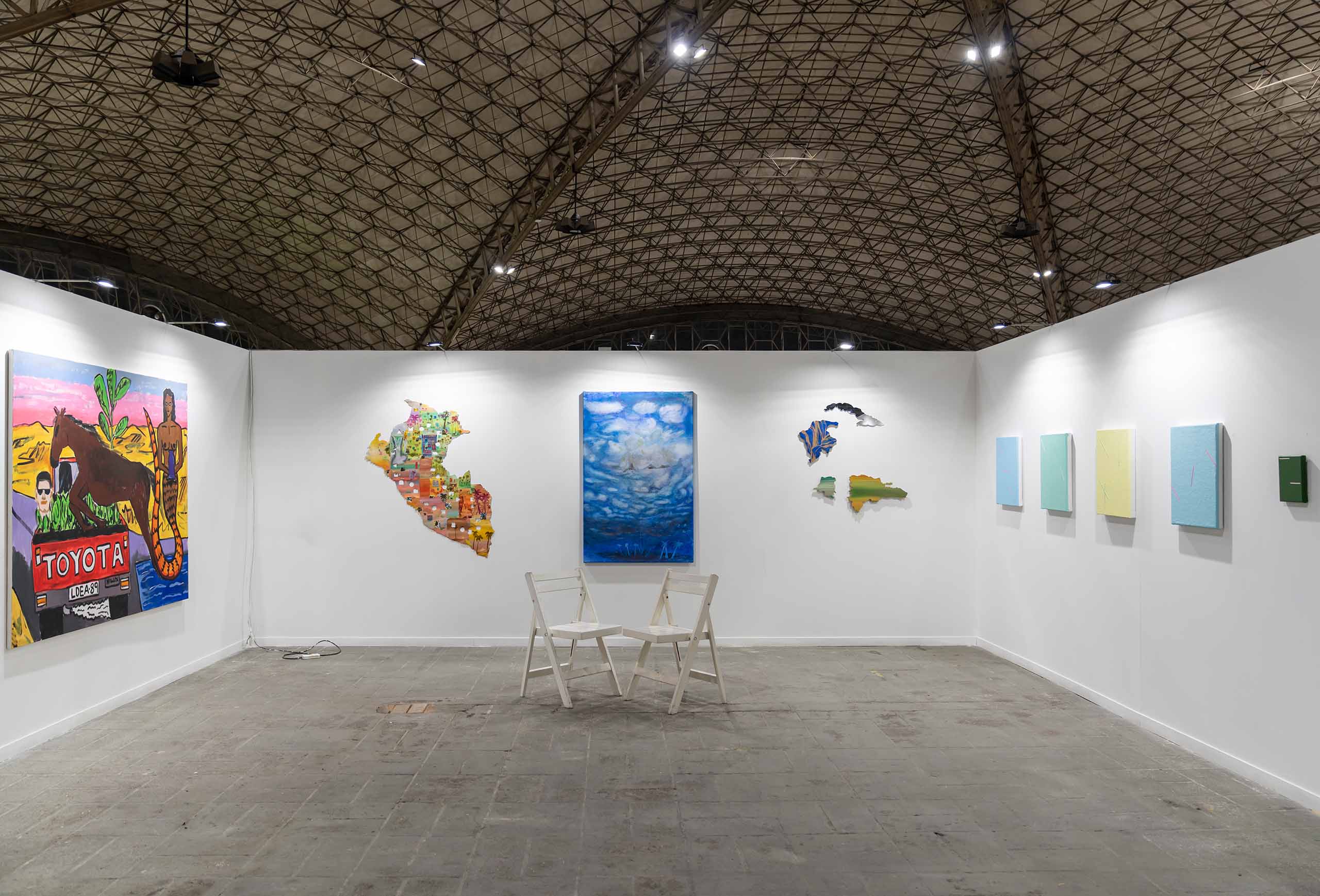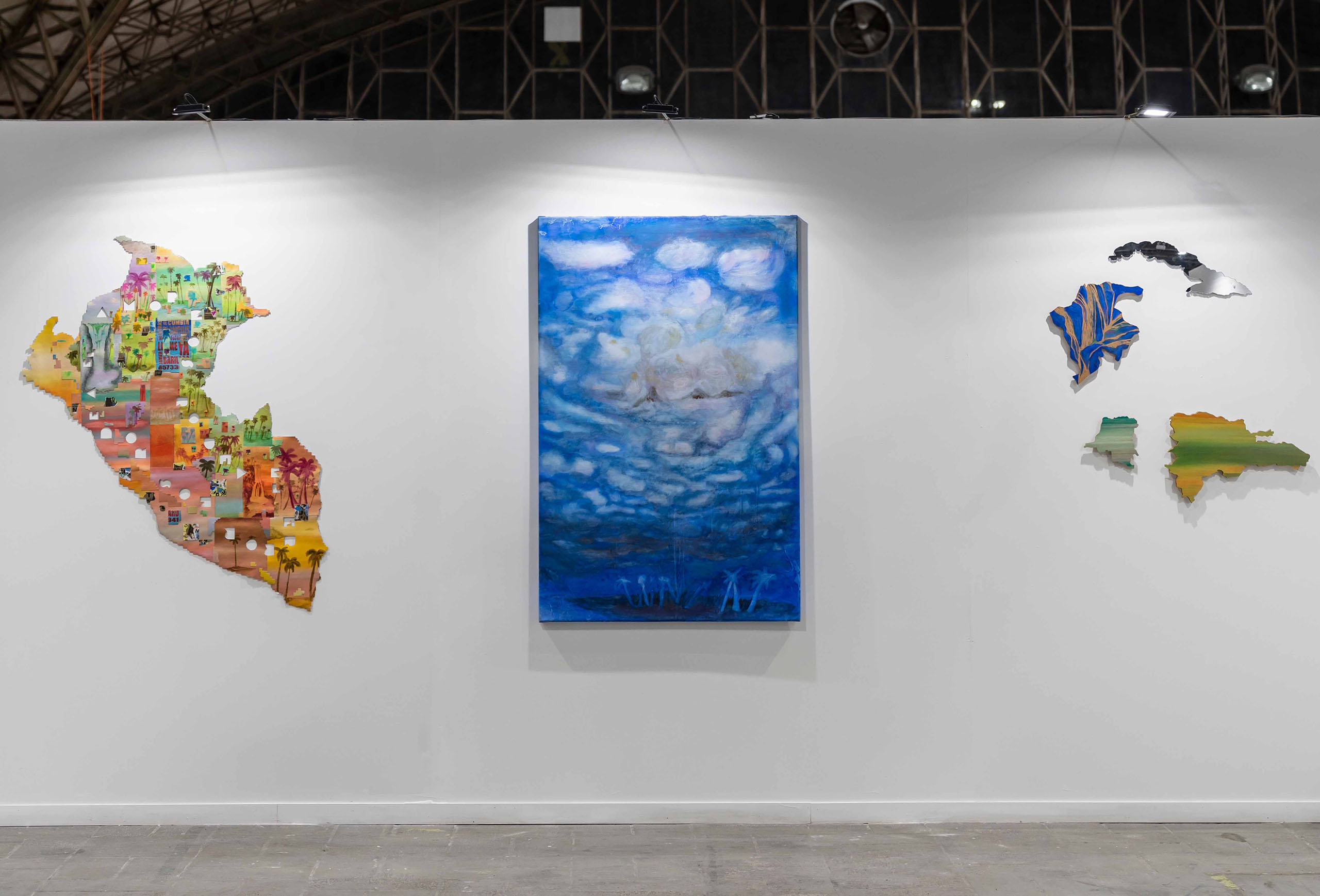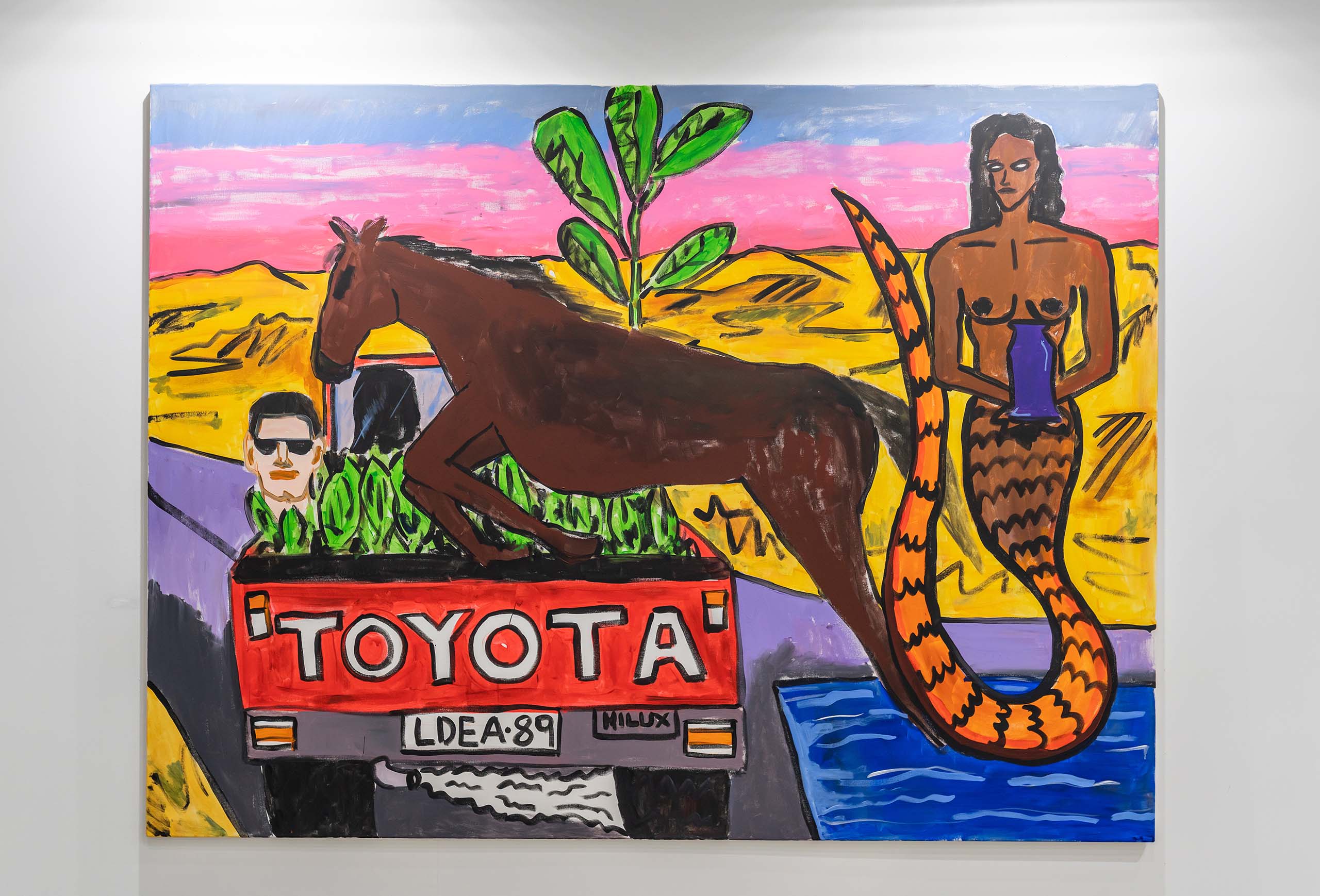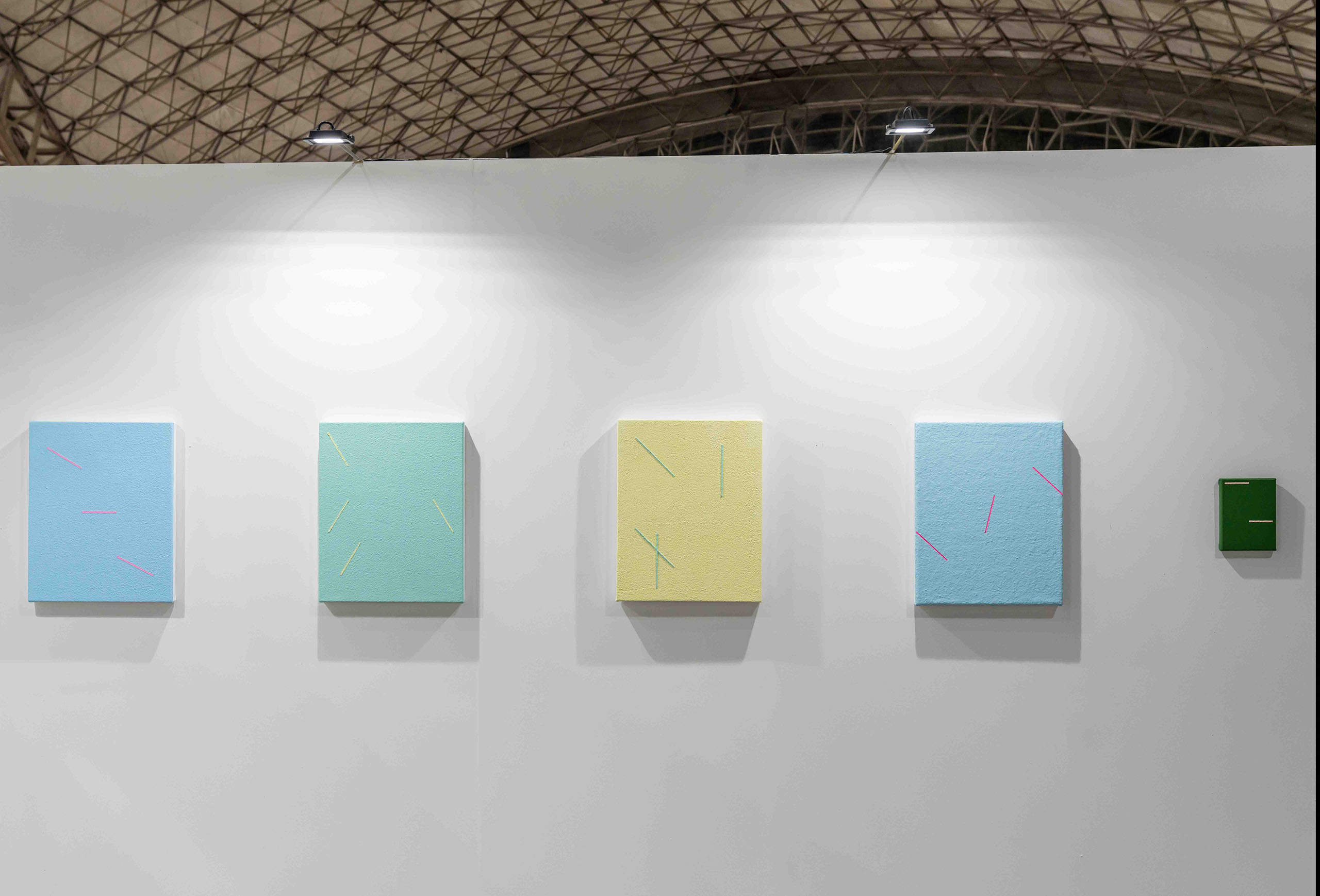Projects/Fairs
Mercado de Arte Contemporáneo | Main Section – Booth 49 | Córdoba, Argentina
Curated by Roberto Echen.

ARCHIPIÉLAGO
JAVIER BARILARO | b. 1974, Buenos Aires, Argentina
The motley versions of the world map visit the geography with the kick of shapes that arouse beauty, formed as a group by whim. When topological rigor is not a necessary condition, imagination gains ground where the bet is allegorical.
The aesthetics of the Archipiélago series go back to the years between 2004 and 2007, when the artist began to elaborate his "anti-posters", which do not advertise a product and show a love for tropical colors and shapes. Torn papers and overlapping fabrics, sometimes mounted on an openwork wooden board, are the material of the simulacrum that makes silhouettes of islands or continents emerge, adding a new layer of meaning by deliberately using the referenced maps.
In their respective locations, the forms -such as waterfalls and palm trees- and the vibrant colors of the highlands and the jungle are presented in an imaginary relationship, free and proper. The interpretation is guided and enriched by the inclusion of daring fragmentary texts in the form of confessions and endless circles.

EL RECOLECTOR DE LECHUGAS
PABLO LINSAMBARTH | b. 1989, Santiago de Chile
El recolector de lechugas is a painting that deals with the theme of migratory flows from the countryside to the city, in the specific context of the Atacama Desert. Faced with the common denominator of how art can be applied to everyday political life, the anecdote or story is used as an investigative supply. On a road that seems to have no end, on a Toyota vegetable truck (common among vegetable sellers in Chile), a jumping horse as an image of the promise of social ascent and a woman-snake that appeals to the symbolism of deception. Reference is made to the subjugation that the labor system inflicts on our bodies by unfairly exchanging time, an unrecoverable and unrecoverable dimension, for money. The compositional initiative is to explore the substantial language of the pictorial execution, but to cross it by codes and symbologies inherent to its nature, in order to elaborate the relationship that exists between the enigmatic and the timeless.

YAMASÁ
CHARLIE QUEZADA | b. 1986, Santo Domingo, Dominican Republic
The research of Yamasá, named after a village an hour and a half north of the Dominican capital, surrounds the collaborative methodology of construction in communities. These natural dwellings visit the intrinsic conjunction of their materials -which combine imported industrial and natural found elements- and their colors -whose choice implies on the one hand a realization and on the other hand the curing of the endemic wood-. In the exercise of their movement, the colors are combined and superimposed to configure a chiaroscuro that is vibrant to the eye.
The perceptual theory of the use of color in rural spaces moves away from the so-called "colonial color" typical of the capital and opts for positivity and the intensity of brightness. The texture of vernacular buildings is evoked in the scale of roughness that is the result of the addition of powdered glass to the pictorial mass. The homes built in a self-taught manner, applying knowledge transmitted orally and detached from urban planning, influence the artist in the diagramming of the lines arranged on the canvas, read as a zenithal view of an architectural plan. The local masonry chooses the color with interest in the subtle authenticities that mark the interior of its space of belonging.

Artists:
Javier Barilaro
Pablo Linsambarth
Charlie Quezada